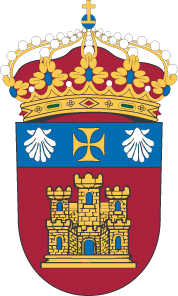Por favor, use este identificador para citar o enlazar este ítem: http://hdl.handle.net/10259/9132
Título
Extracción con agua subcrítica y ultrafiltración para la obtención de pecto-oligosacáridos a partir de residuos de piel cebolla
Fecha de lectura/defensa
2023-06
Abstract
In this work the purification by ultrafiltration using tubular ceramic membranes of pectic
oligosaccharides (POS) extracted from onion skin wastes (OSW) was studied.
In the first stage of the work, subcritical water was used to promote the hydrolysis of OSW and
obtain a liquid hydrolysate rich in POS. For this purpose, three different combinations of
temperature and extraction time (115 ºC – 180 min; 125 ºC – 150 min and 135 ºC – 90 min)
were used in a batch extractor at 25 bar. In order to consider the combined effect of the
temperature and the extraction time, the severity factor (log Ro) was calculated, resulting to be
in the range 2.88 to 3.29. The best results in terms of POS concentration (5643 ± 84 mg/L) in
the hydrolysate was obtained in the experiment carried out at 125 ºC (log Ro = 3.16). It was
also possible to demonstrate that the composition of the liquid hydrolysate was strongly
influenced by the extraction conditions: the higher the severity factor the higher the
concentration of impurities (organic acids, HMF and furfural) and higher the POS hydrolysis
rate. This was demonstrated by the increased concentration of free monosaccharides
(glucose, xylose, galactose and arabinose) and the decrease in the POS molecular weight.
In the second stage of the work, the aim was to study the separation of POS from the impurities
formed during the subcritical water hydrolysis stage, using an ultrafiltration process in
diafiltration mode. For this purpose, a 50 kDa tubular membrane was firstly used (Tami
Industries, active layer of TiO2 and 132 cm2 of effective area). The fouling mechanism,
hydraulic resistance and the purification extent were studied. Important differences in the
permeate flux (J) were observed as a function of the subcritical water hydrolysate composition.
The permeate flux obtained when filtering the 115 ºC hydrolysate decreased dramatically at
the beginning of the experiment to achieve a constant value, whereas the hydrolysates
obtained at 125 and 135 ºC exhibited a different behaviour: an initial fast decline of the
permeate flux followed by a slower continuous decrease. This result for 125 and 135 ºC
hydrolysates can be justified due to the effects of the membrane fouling (fouling mechanism
was cake layer formation, according to Hermia’s model). Using this 50 kDa membrane, the
POS recovery was 76 % (115 ºC hydrolysate), 58 % for the 125 ºC hydrolysate and 56% for
the 135 ºC hydrolysate. In all the cases, a complete removal of the impurities was achieved
after the dilution factor of 3.5.
To complete the purification experiments, the effect of the removal of the colloidal matter (by
centrifugation) present in the 125 ºC hydrolysate was studied using two different membranes
(50 and 5 kDa). In the hydrolysate, it was observed the formation of a black precipitate that
was responsible for the membrane fouling, hindering the filtration process. The removal of this
colloidal matter, which did not affect the POS fraction, was responsible for the reduction of the
colour of the hydrolysate by 60 % and the promotion of the filtration process (a faster removal
of the impurities was achieved) without loss of the POS fraction. Finally, when a 5 kDa
membrane was used, the retention of the POS fraction was higher than 80 % in comparison
to the 60 % obtained for the 50 kDa membrane.
Palabras clave
Subcritical water
Oligosaccharide fractionation
Ultrafiltration
Diafiltration
Onion skin waste
Biorefinery
Materia
Ingeniería química
Chemical engineering
Alimentos
Food
Aparece en las colecciones











